#Wind Farm
Explore tagged Tumblr posts
Text
instagram
The Israeli company Nordic Wind is attempting to build more windfarms on unceded Sámi land. Our community has been joining forces with the Palestinian encampment in Tråante to protest and block these developments. No genocide on stolen land. #NoNordicWind
#NoNordicWind#Sámi#Sápmi#Palestine#Protest#Wind farm#Green energy#Colonization#Israel#Landback#Native#Indigenous#Instagram
573 notes
·
View notes
Text
#good news#ireland#wind farm#wind energy#wind turbines#wind power#green energy#renewable power#renewable energy
813 notes
·
View notes
Text
"Dear EarthTalk: What is wind repowering and why are environmentalists so bullish on it?
—H. King, Mesa, AZ
One of the most common forms of clean energy is wind power. People from around the world could recognize a wind farm from just one look. While wind power has been a staple in renewable energy since the idea’s inception, many of the original and old wind turbines have begun to show signs of aging. Wind repowering aims to fix this, by revamping old turbines with more efficient components, or putting in new, state-of-the-art turbines as a whole. These new components and units can reduce noise, more efficiently power a turbine, and a deliver a higher overall energy output.
Denmark, an early adopter of wind repowering, saw a 1.3 GW gain in capacity and a reduction of 109 wind turbines, enabling substantially increased wind energy production with fewer turbines. This promising data prompted a surge in wind repowering projects, and in 2019, 86 percent of wind energy projects there were classified as “repowered.”
These signs of success and scalability showed other countries the benefits of wind repowering. The U.S, with help from large energy corporations like General Electric, has more than 40 active wind repowering sites, with over 2,500 turbines having some type of renovation. This hefty wind repowering advancement is responsible for four gigawatts of energy, or the power for more than 30 million homes.
It’s no secret how fast wind repowering is growing, but upgrades can be made to many different types of renewable energy. Why do eco-advocates support wind repowering so strongly? Wind repowering has energy, financial, aesthetic and technological benefits. Not only does it make units more efficient, it also removes units that might be aesthetically unpleasing, or in less efficient spots than they could be. Wind repowering also increases the lifespan of turbines by as much as 20 years, and reduces the need for maintenance. Repowered turbines are also quieter, sleeker, and produce considerably more energy.
So, while there are many types of repowering efforts for other renewable energy sources, none are as comprehensive or successful as wind repowering. Not only is it a comprehensive option for revamping clean energy, but it does not require the entry costs that just building new wind farms requires.
The only barrier to wind repowering at the moment is legislation. Bills and policies cannot keep up with the demand for it. Readers should call local officials, or urge any nearby wind farms to look at wind repowering. Spreading awareness is the first and most important step."
-via E: The Environmental Magazine, April 26, 2024
#wind power#renewables#renewable energy#renewable electricity#clean energy#denmark#united states#wind turbines#wind farm#reuse#good news#hope#environment#environmental news
289 notes
·
View notes
Text

june 5, 2009
#flickr#2009#train#window view#wind turbines#wind farm#field#sky#found photography#old web#webcore#search term: deutschland
180 notes
·
View notes
Text

West Virginia
photo: David Castenson
98 notes
·
View notes
Text
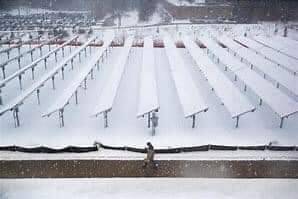
Right now the average wind farm is about 150 turbines. Each wind turbine needs 80 gallons of oil as lubricant and we're not talking about vegetable oil, this is a PAO synthetic oil based on crude... 12,000 gallons of it. That oil needs to be replaced once a year.
It is estimated that a little over 3,800 turbines would be needed to power a city the size of New York... That's 304,000 gallons of refined oil for just one city.
Now you have to calculate every city across the nation, large and small, to find the grand total of yearly oil consumption from "clean" energy.
Where do you think all that oil is going to come from, the oil fairies?
Not to mention the fact that the large equipment needed to build these wind farms run on petroleum. As well as the equipment required for installation, service, maintenance, and eventual removal.
And just exactly how eco-friendly is wind energy anyway?
Each turbine requires a footprint of 1.5 acres, so a wind farm of 150 turbines needs 225 acres; In order to power a city the size of NYC you'd need 57,000 acres; and who knows the astronomical amount of land you would need to power the entire US. All of which would have to be clear-cut land because trees create a barrier & turbulence that interferes with the 20mph sustained wind velocity necessary for the turbine to work properly (also keep in mind that not all states are suitable for such sustained winds). Boy, cutting down all those trees is gonna piss off a lot of green-loving tree-huggers.
Let's talk about disposal now.
The lifespan of a modern, top quality, highly efficient wind turbine is 20 years.
After that, then what? What happens to those gigantic fiber composite blades?
They cannot economically be reused, refurbished, reduced, repurposed, or recycled so guess what..? It's off to special landfills they go.
And guess what else..? They're already running out of these special landfill spaces for the blades that have already exceeded their usefulness. Seriously! Those blades are anywhere from 120 ft. to over 200 ft. long and there are 3 per turbine. And that's with only 7% of the nation currently being supplied with wind energy. Just imagine if we had the other 93% of the nation on the wind grid... 20 years from now you'd have all those unusable blades with no place to put them... Then 20 years after that, and 20 years after that, and so on.
Golly gee, how green is that?
Oops, I almost forgot about the 500,000 birds that are killed each year from wind turbine blade collisions; most of which are endangered hawks, falcons, owls, geese, ducks, and eagles.
Apparently smaller birds are more agile and able to dart and dodge out of the way of the spinning blades, whereas the larger soaring birds aren't so lucky.
I'm sure the wildlife conservationist folks are just ecstatic about that.
I'm so glad the wind energy people are looking out for the world.
#the greens#greenies#politics#world politics#climate solutions#wind farm#climate hoax#oil industry#greta thunberg
97 notes
·
View notes
Text
Dandelion News - September 1-7
Like these weekly compilations? Tip me at $kaybarr1735 or check out my new(ly repurposed) Patreon!
1. Rescue Dog Who Helped Raise Dozens of Foster Puppies Finds Forever Home

“Three and a half years ago, Noel arrived at Lucky Dog as a pregnant pooch pulled from [an] animal control shelter. […] Once the puppies were old enough to start life on their own, Lucky Dog found homes for all of them. […] Noel was an "amazing mom" to over two dozen foster puppies while staying at [a foster] house.”
2. Radiant cooling device uses significantly less energy than traditional air conditioning

“Testing of the device […] showed the cooling device capable of cooling the skin by approximately 7.3°C. It also showed that it consumed 50.4% less energy than an average air-conditioner of comparable ability. The research team notes that the device can also be run in reverse, to serve as a radiant heater.”
3. How a Native elections official is breaking down voting barriers in Arizona
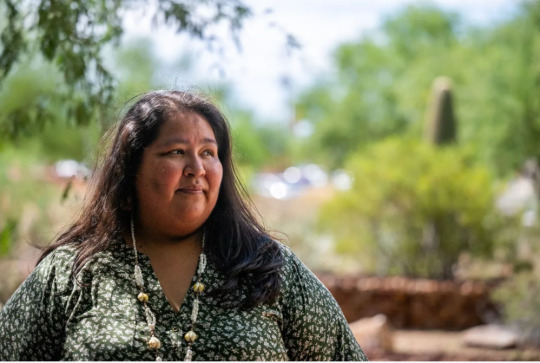
“Gabriella Cázares-Kelly, Pima County Recorder, [… ran for office in 2020] to represent people who were being ignored by the democratic system and denied the right to vote. […] “People started getting the voter registration cards back, getting their voter IDs in the mail, and they were so excited to show me or thank me for helping them register,” she said.”
4. Scientists are growing [coral] babies in a lab to save animals from extinction

“Each August, corals in Florida release their eggs and sperm into the water[, … but “they] can’t reproduce on their own anymore.” [So, researchers are] collecting and freezing the spawn and growing them into genetically diverse baby corals that can be replanted into the wild[….] These resilient corals could pass important adaptations to their babies[….]”
5. New Legislation Will Accelerate Offshore Wind Energy in Delaware

““The responsible development of offshore wind and the transition to renewable energy is essential for the protection of wildlife, habitats, and communities from the havoc of climate change[….]” “This legislation is the product of careful consideration and input from multiple state agencies, industry experts, energy researchers and environmental advocates[….]””
6. Removal of Apache Trout from Endangered Species List Due to Collaborative Conservation Efforts

“[A]fter more than five decades of recovery efforts by federal, state and Tribal partners, […] the restoration of Arizona’s state fish marks the first […] trout delisted due to recovery, a significant conservation success[….] The Apache trout is found exclusively in streams of the White Mountains in the eastern part of Arizona […] and is sacred to the White Mountain Apache Tribe.”
7. [Texas] State court rules Austin must release files on police complaint

“Under the act, records of any complaint – even if no disciplinary action was taken – must be handed over to the civilian-led Office of Police Oversight. [… T]he ruling ushers in a new level of oversight of the complaint process and the department writ-large.”
8. Super-rare hairy-nosed wombat caught waddling through a woodland in Australia
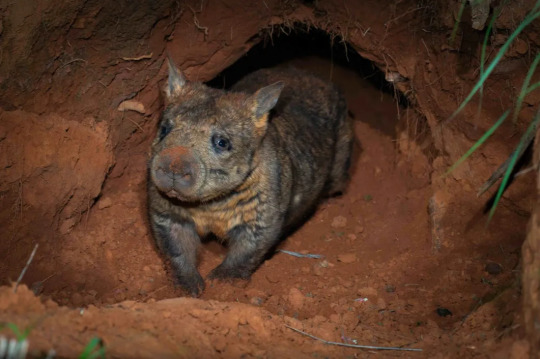
“Ecologists at Australian Wildlife Conservancy (AWC) say the video footage provides exciting evidence wombats are breeding in the refuge again. […] There are only 400 of them in the world, making them rarer than the giant panda and the Sumatran tiger. […] “Although this isn’t the first joey born at the refuge, it is the first juvenile spotted for a few years.””
9. The country’s biggest electric school-bus fleet will also feed the grid

“[The] country’s first all-electric school-bus fleet[,…] which serve the district’s special-needs students, […] can charge with low-cost power and discharge spare capacity at times of grid stress[…. V]ehicle-to-grid charging is something for which electric school buses are particularly well suited.”
10. The Push to Save Horseshoe Crabs Is Gaining Momentum
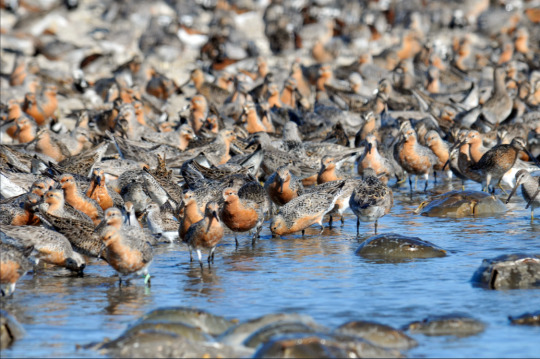
“Conservationists hope new restrictions on harvesting and synthetic alternatives to a crab-blood compound used in biomedical testing can turn the tide for the ancient arthropods, whose eggs are a vital food source for Red Knots [threatened migratory birds]. […] Now conservationists are in the thick of a multi-pronged push to save both species.”
August 22-28 news here | (all credit for images and written material can be found at the source linked; I don’t claim credit for anything but curating.)
#hopepunk#good news#dog#foster dog#animal shelters#dogs#air conditioning#energy efficiency#native#arizona#voting#politics#coral#conservation#wind energy#wind farm#delaware#trout#fish#apache#police#police accountability#wombat#australia#school buses#electric vehicles#horseshoe crab#birds#migration#endangered species
21 notes
·
View notes
Text

Sheep at Scout Moor Wind Farm. Walking along the Greater Manchester boundary
Ramsbottom, Rochdale


#photography#nature#hiking uk#hiking#uk#english countryside#scout moor wind farm#wind turbine#wind farm#sheep#onshore wind farm#farmland#rochdale#greater manchester#greater Manchester boundary walk#outdoors#uk walks#walking
11 notes
·
View notes
Text

#photographers of tumblr#photographers on tumblr#photography#lensblr#original photographers#bay area#norcal#california#april#spring#altamont pass#wind farm#wind turbines
32 notes
·
View notes
Text
Wind, Coal, West-by-god-Virginia
Interesting to see an article about a place so close to where I live:

I think that, on a national level, we should do a better job of supporting people whose livelihoods are being eliminated. Yes, we need to support wind and solar and get rid of coal. We must and will do that. However, people and whole towns are suffering pretty badly in the transition.

32 notes
·
View notes
Text
Day 231: Wind farm

link
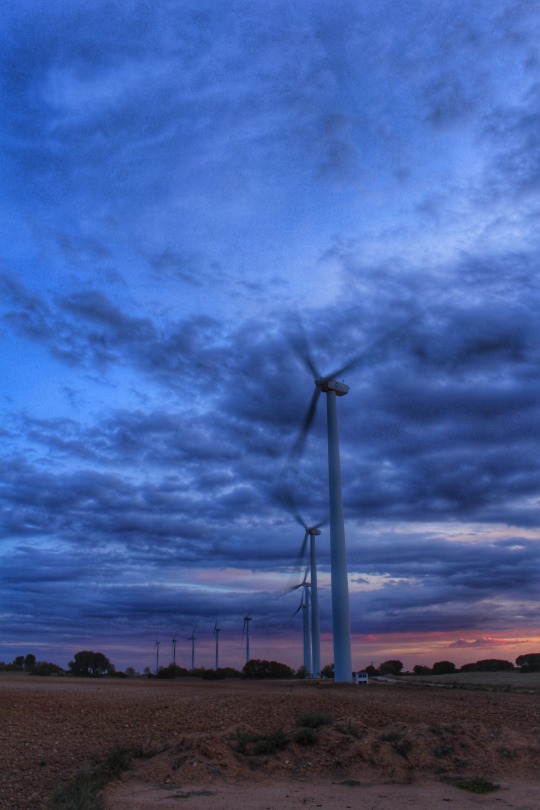
link

link
–These images are part of the public domain, meaning you can do anything you want with them! (you could even sell them as a shirt, poster or whatever, no need to credit them!)–
#public domain#art#copyright#free art#open source#flickr#flickblr#photography#creative commons#no copyright#no copyright image#wind farm#wind energy#wind turbines#renewable energy#renewable power#renewable resources#renewable electricity#sky#clouds#sunset#landscape
8 notes
·
View notes
Text

#nature#nature photography#photography#travel photography#landscape#simple living#countryside#farming#farm#wind farm#mountain range#greenenergy#slow living#explore#feel good#wanderlust#travel destinations#calming#soothing#relaxing#sightseeing#agriculture
16 notes
·
View notes
Text

385 notes
·
View notes
Text
"There’s something deeply comical about suggesting that seagulls are smart enough to wait for you to look away before stealing your french fries, but dumb enough to fly into wind turbine blades.
A two-year study on the interactions of several seabird species at an offshore wind farm found that not a single case of birdstrike was recorded over the study period or in the 10,000 videos taken.
Looking at herring gulls, gannets, kittiwakes, and great black-backed gulls, Swedish state wind company Vattenfall found that most of the birds maintained a 50 to 230-yard distance between themselves and the radius of the spinning turbines.
“This is the first time that any kind of bird species has been studied this closely and in detail at an offshore wind farm,” said study author Henrik Skov. “And these birds are really good at avoiding the turbines. Now we need studies on more varieties.”
The study was conducted on a wind farm consisting of 11 offshore turbines near Aberdeen, Scotland. It used radar surveys and mounted video cameras to gather data.
Why these seabirds avoided the turbines could be down to the individual species observed since other studies have shown seabirds tend to rank high in offshore wind turbine mortality, and of medium risk for land-based wind turbine mortality.
Skov also offered that it could be the turbines are, for one reason or another, outside of prominent flight corridors, and therefore aren’t where birds have historically flown either for migration and nesting purposes, or feeding.
The study is a big milestone in scientists’ attempts to learn how and where to build wind turbines so that they don’t interfere with birds’ flight patterns. If there is something in the data of this study or future observations that could reveal the secret as to why there was no mortality at the Aberdeen wind farm, it could mean that hundreds of thousands of birds could be saved in the future."
-Good News Network, 3/31/23
#wind farm#wind turbines#renewable energy#birds#migratory birds#seabirds#conservation#good news#hope
425 notes
·
View notes
Text
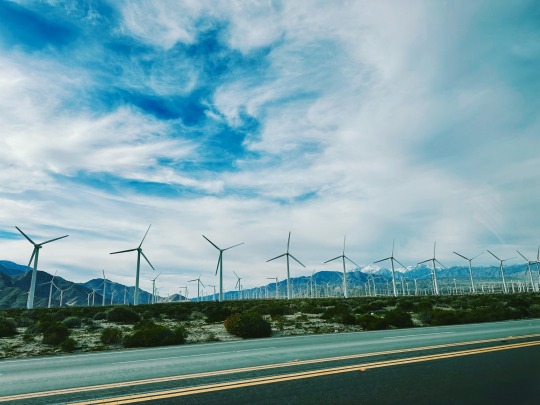

22 notes
·
View notes
Text

A field ecologist who worked on the Clarke Creek Wind Farm north west of Rockhampton had this to say:-
Having worked on the Clarke Creek wind farm, I can confirm that environmental degradation and loss of EVNT plants, ecosystems and animals was astronomical. Where were the green groups when 3000ha vegetation was laid flat, where were the green groups when 400ha of SEVT was bulldozed, where were the green groups when Koala, Greater Glider, Powerful Owl habitat was bulldozed. I contacted Green groups at the time...they didn't want to know about it...perhaps they were too busy hunting down a farmer for clearing his fence line.
Sadly, one prominent consultancy from Brisbane just stood by and let it happen and made no attempt to reign in their client.
#politics#world politics#the greens#greenies#environment#environmetalists#natural habitat#land degradation#land development#wind farm#climate hoax
9 notes
·
View notes